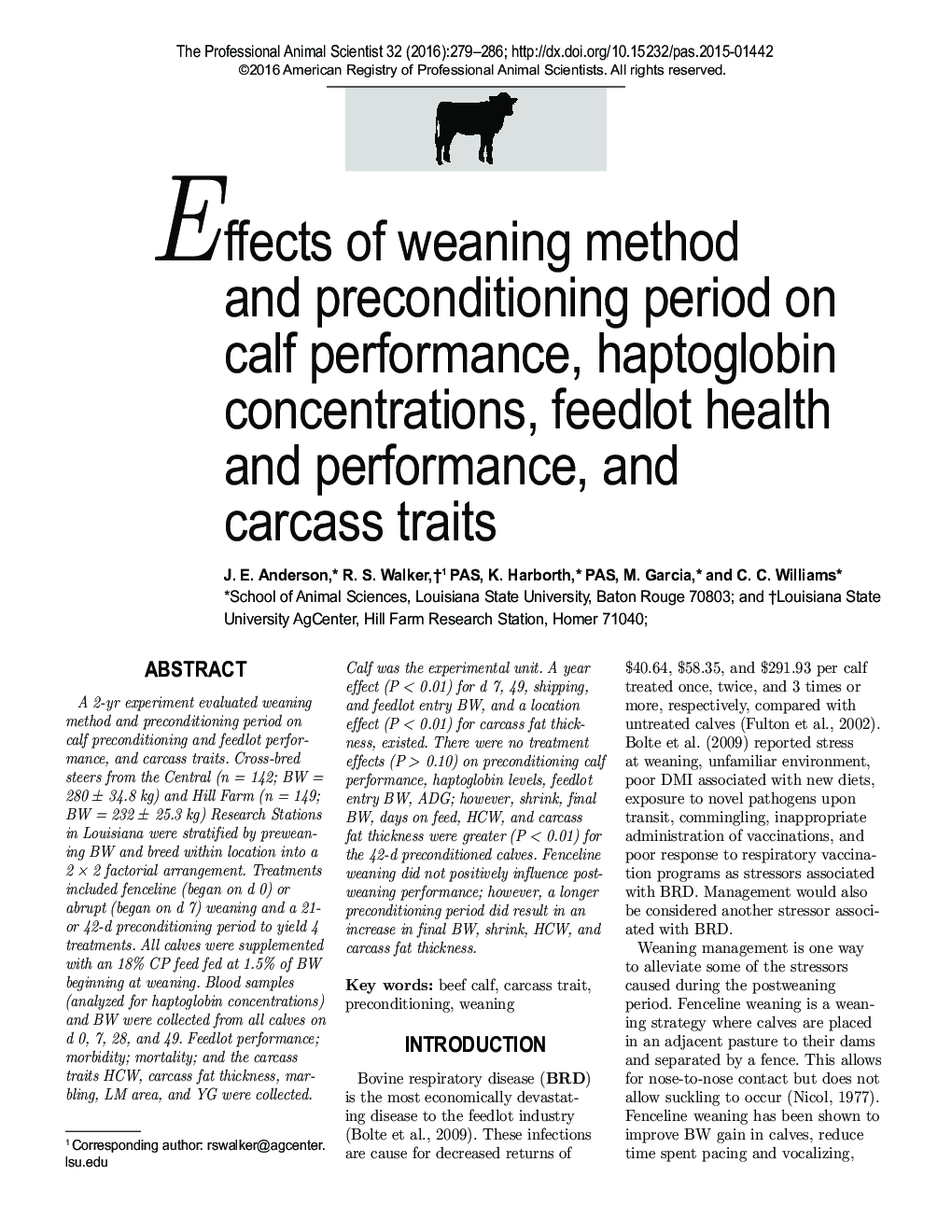| Article ID | Journal | Published Year | Pages | File Type |
|---|---|---|---|---|
| 10161700 | The Professional Animal Scientist | 2016 | 8 Pages |
Abstract
A 2-yr experiment evaluated weaning method and preconditioning period on calf preconditioning and feedlot performance, and carcass traits. Cross-bred steers from the Central (n = 142; BW = 280 ± 34.8 kg) and Hill Farm (n = 149; BW = 232 ± 25.3 kg) Research Stations in Louisiana were stratified by preweaning BW and breed within location into a 2 à 2 factorial arrangement. Treatments included fenceline (began on d 0) or abrupt (began on d 7) weaning and a 21- or 42-d preconditioning period to yield 4 treatments. All calves were supplemented with an 18% CP feed fed at 1.5% of BW beginning at weaning. Blood samples (analyzed for haptoglobin concentrations) and BW were collected from all calves on d 0, 7, 28, and 49. Feedlot performance; morbidity; mortality; and the carcass traits HCW, carcass fat thickness, marbling, LM area, and YG were collected. Calf was the experimental unit. A year effect (P < 0.01) for d 7, 49, shipping, and feedlot entry BW, and a location effect (P < 0.01) for carcass fat thickness, existed. There were no treatment effects (P > 0.10) on preconditioning calf performance, haptoglobin levels, feedlot entry BW, ADG; however, shrink, final BW, days on feed, HCW, and carcass fat thickness were greater (P < 0.01) for the 42-d preconditioned calves. Fenceline weaning did not positively influence postweaning performance; however, a longer preconditioning period did result in an increase in final BW, shrink, HCW, and carcass fat thickness.
Related Topics
Life Sciences
Agricultural and Biological Sciences
Animal Science and Zoology
Authors
J.E. Anderson, R.S. PAS, K. PAS, M. Garcia, C.C. Williams,
